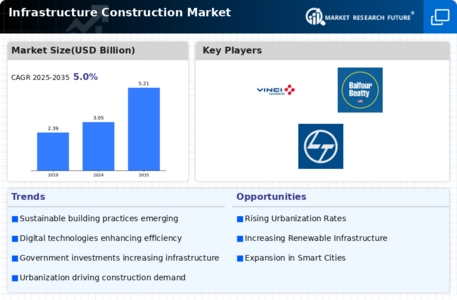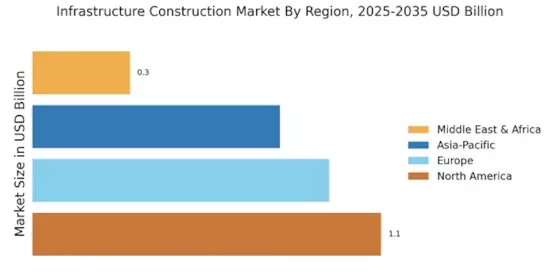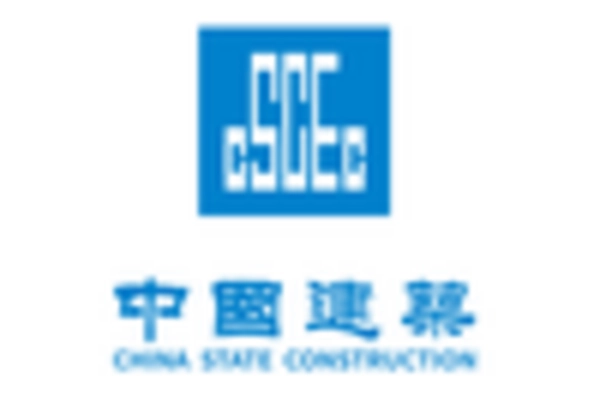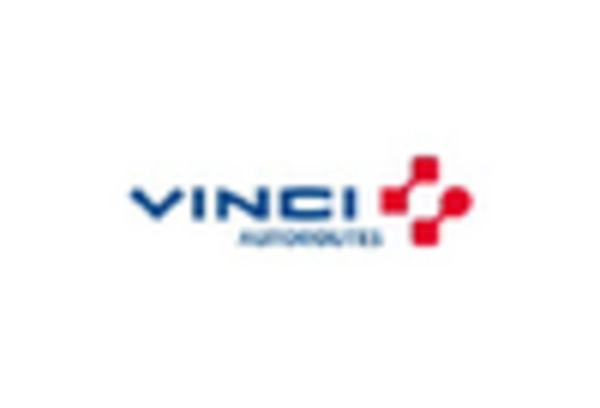Leading market players are investing heavily in research and development to expand their product lines, which will help the Infrastructure Construction Market, grow even more. Market participants are also undertaking a variety of strategic activities to expand their footprint, with important market developments including new product launches, contractual agreements, mergers and acquisitions, higher investments, and collaboration with other organizations. To expand and survive in a more competitive and rising market climate, the Infrastructure Construction industry must offer cost-effective items.
Manufacturing locally to minimize operational costs is one of the key business tactics used by manufacturers in the Infrastructure Construction industry to benefit clients and increase the market sector. In recent years, the Infrastructure Construction industry has offered some of the most significant advantages to the development and modernization of essential public facilities, enhancing overall economic growth, and fostering improved connectivity and accessibility for communities. Major players in the Infrastructure Construction Market, including China State Construction Engineering Corp.
Ltd, VINCI, China Communications Construction Group Ltd, Balfour Beatty, Skanska AB, Kajima Corporation, Fluor Corporation, Kiewit Corporation, Laing O’Rourke, ACS Group, Hyundai Engineering & Construction Co. Ltd (HDEC), Bouygues Group, Larsen & Toubro, Royal BAM Group, Hochtief Aktiengesellschaft are attempting to increase market demand by investing in research and development operations.
VINCI is an integrated company specializing in construction and concessions, engaging in the design, construction, and management of infrastructure and facilities. The company provides a range of services, including infrastructure development, civil engineering, design coordination, consultancy, and maintenance for transport infrastructure and public facilities. Vinci's diverse portfolio covers projects in transport systems, public and private buildings, energy, airports, urban development, and water, energy, and communication networks. Additionally, Vinci is involved in transport infrastructure concession operations across various sectors.
Headquartered in Nanterre, Paris, France, Vinci's subsidiary, HEB Construction, was awarded a contract for the Takitimu North Link road in Southeast Auckland, New Zealand, in January 2022. The project, undertaken in a joint venture with Fulton Hogan, aims to improve accessibility and support urban development while enhancing safety by diverting heavy freight traffic from neighboring towns.
China State Construction Engineering Corp Ltd (CSCEC) is a leading provider of construction contracting and real estate services, offering a comprehensive range of solutions. Its services encompass engineering, building construction, urban development, real estate investment, infrastructure construction and investment, project management, design and survey, and equipment manufacturing. CSCEC is actively involved in diverse projects including roads, municipal utilities, housing units, ports and waterways, airports, railways, bridges, water conservancy, hydropower, mining, metallurgy, and petrochemical plants. Additionally, the company extends construction financing services. With a presence spanning Asia-Pacific, the Middle East, Africa, Europe, and North America, CSCEC is headquartered in Beijing, China


















Leave a Comment